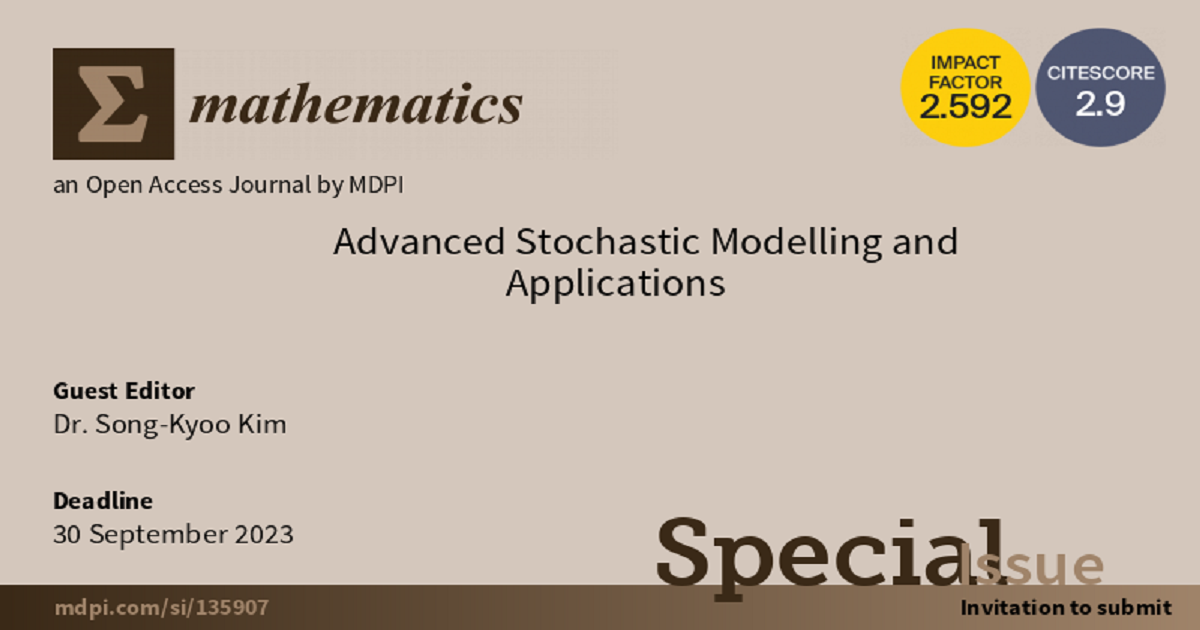Advanced Stochastic Modelling and Applications
A special issue of Mathematics (ISSN 2227-7390). This special issue belongs to the section "Dynamical Systems".
Deadline for manuscript submissions: closed (30 September 2023) | Viewed by 4366

Special Issue Editor
Interests: stochastic models; probability theory; stochastic duel game; blockchain governance game; innovations and technologies
Special Issues, Collections and Topics in MDPI journals
Special Issue Information
Dear Colleagues,
We would like to invite you to submit your work to the Special Issue “Advanced Stochastic Modelling and Applications”, which aligns with stochastic/uncertainty phenomena. This Special Issue seeks high-quality contributions in both theoretical and applied stochastic modelling used to solve real-world problems and issues.
Dr. Song-Kyoo (Amang) Kim
Guest Editor
Manuscript Submission Information
Manuscripts should be submitted online at www.mdpi.com by registering and logging in to this website. Once you are registered, click here to go to the submission form. Manuscripts can be submitted until the deadline. All submissions that pass pre-check are peer-reviewed. Accepted papers will be published continuously in the journal (as soon as accepted) and will be listed together on the special issue website. Research articles, review articles as well as short communications are invited. For planned papers, a title and short abstract (about 100 words) can be sent to the Editorial Office for announcement on this website.
Submitted manuscripts should not have been published previously, nor be under consideration for publication elsewhere (except conference proceedings papers). All manuscripts are thoroughly refereed through a single-blind peer-review process. A guide for authors and other relevant information for submission of manuscripts is available on the Instructions for Authors page. Mathematics is an international peer-reviewed open access semimonthly journal published by MDPI.
Please visit the Instructions for Authors page before submitting a manuscript. The Article Processing Charge (APC) for publication in this open access journal is 2600 CHF (Swiss Francs). Submitted papers should be well formatted and use good English. Authors may use MDPI's English editing service prior to publication or during author revisions.
Keywords
- probability theory
- stochastic models
- game theoretic analysis of stochastic models
- novel queueing models in applications
- multidimensional Markov chains
- operations research
- stochastic analysis of machine learning systems





